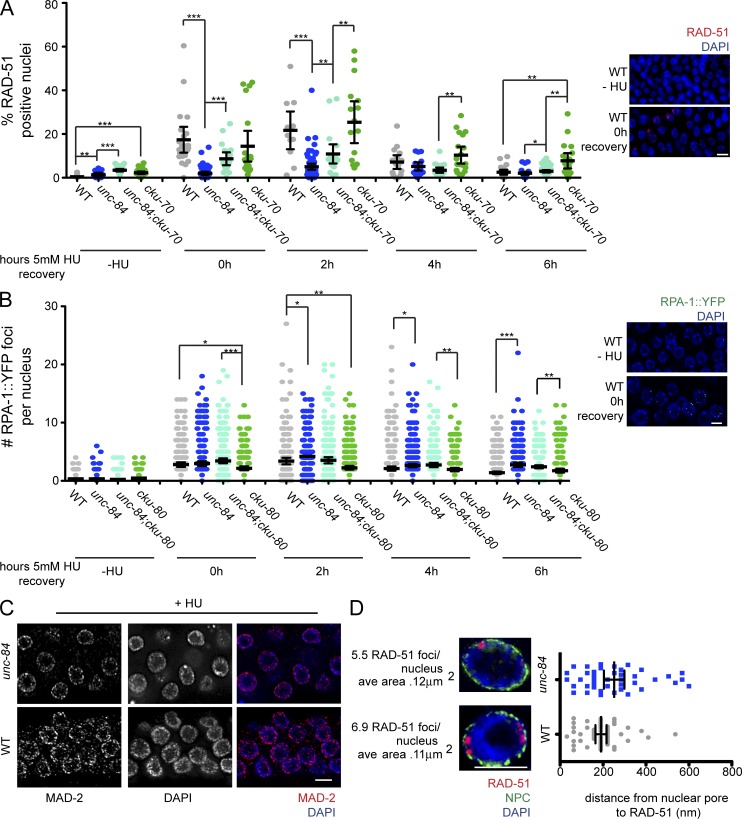Figure 2.
RAD-51 and RPA are altered after HU treatment in the absence of UNC84. (A) RAD-51–positive nuclei in wild type (WT), unc-84(n369), unc-84(n369);cku-70(tm1524), or cku-70(tm1524) in the absence of or after recovery from 5 mM HU. n > 30. (B) Number of RPA-1::YPF foci per nucleus in wild type, unc-84(n369), unc-84(n369);cku-80(RNAi), or cku-80(RNAi) in the absence of or after recovery from 5 mM HU. n > 30. (C) MAD-2 (red) staining in wild-type or unc-84(n369) germlines after 25 mM HU treatment counterstained with DAPI (blue). (D) High-resolution SIM images of a single nucleus from unc-84(n369) and wild-type worms treated with 25 mM HU and stained with RAD-51 (red), NPC (Mab414; green), and DAPI (blue). Next to each image is the mean number of RAD-51 foci observed in each genotype as well as the mean area of each RAD-51 focus (n = 4 germlines). Images represent a projection of three z sections. The scatterplot indicates the distance in nanometers between NPC and RAD-51 foci in unc-84(n369) and wild-type worms after HU. Bars, 5 µm. Error bars indicate 95% CI. *, P < 0.05; **, P < 0.01; ***, P < 0.0001, when compared with unc-84(n369) single mutants.

